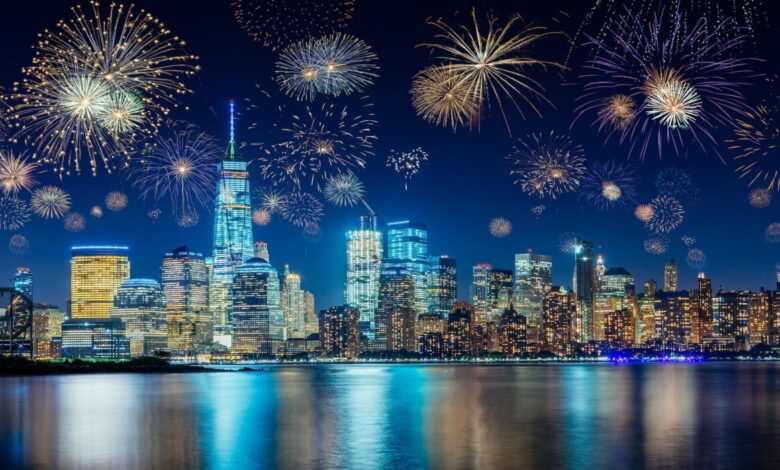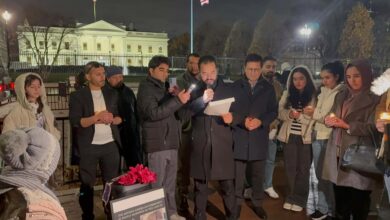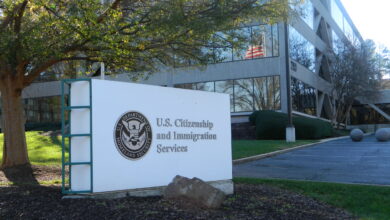New Year’s celebrations in the U.S. are filled with social, cultural, and family gatherings. The main festivities take place on the night of December 31st, leading into January 1st, featuring street parties, concerts, dance events, and fireworks displays.
One of the most famous celebrations occurs in New York City’s Times Square, where thousands gather to witness the iconic Ball Drop—a giant illuminated sphere descending from One Times Square—symbolizing the transition from one year to the next.
In California, known for its mild weather and cultural diversity, New Year’s celebrations take on unique characteristics. In cities like Los Angeles, San Francisco, San Jose, and San Diego, festivities include fireworks displays, live concerts, street parties, and family gatherings. A distinctive feature of California’s celebrations is outdoor events, where people gather at beaches and parks to enjoy fireworks, live music, and entertainment.
New Year’s Traditions in the U.S.
One of the most well-known American traditions is setting “New Year’s Resolutions.” Many people use this time to commit to personal improvement, such as quitting bad habits, improving health, learning new skills, or starting a new career. This tradition reflects a desire for self-growth and positive change.
In many American households, New Year’s Eve is spent with family and friends, enjoying special meals, festive gatherings, and celebrations. In some regions, particularly California, outdoor celebrations at parks and beaches allow people to welcome the new year under the open sky with fireworks and concerts.
Another unique New Year’s tradition, particularly in the southern U.S., is eating black-eyed peas, which are believed to bring good luck and prosperity in the coming year.
New Year and the American Holiday Calendar
New Year’s celebrations extend beyond January 1st, as many people take advantage of the weekend and surrounding holidays for travel and leisure. Other major U.S. holidays, such as Thanksgiving, Independence Day (July 4th), and Labor Day, also serve as significant national celebrations where people gather with family and friends.
These holidays provide valuable opportunities for families to connect and celebrate. For immigrants and newcomers, they offer a chance to embrace American traditions while maintaining their own cultural heritage.
New Year’s Celebrations and Afghan Immigrants in the U.S.
For Afghan immigrants, New Year’s celebrations in the U.S. can be a new and different experience. Many may not be familiar with American New Year traditions and may initially feel detached from the celebrations. However, these festivities provide an excellent opportunity to integrate into a new society and build connections.
Afghan immigrants can blend their cultural traditions with American New Year celebrations. Many Afghan families in the U.S. host small gatherings, celebrating with traditional Afghan dishes such as Qabili Palaw, Bolani, and Kabob, while enjoying the company of family and friends. This allows them to preserve their heritage while embracing new cultural experiences.
Additionally, Afghan immigrants can participate in public New Year events to experience diverse celebrations in the U.S. Engaging in these festivities not only provides insight into American culture but also fosters social connections with other communities and immigrants.
Conclusion
New Year’s in the U.S., especially in California, is a time for celebration, new beginnings, and setting goals. While the holiday holds deep significance for Americans, it also offers immigrant communities an opportunity to engage with their new society, learn about different cultures, and expand their social circles.
By blending Afghan traditions with American celebrations, immigrants can make the New Year a meaningful and enriching experience, strengthening their cultural identity while embracing their new home.






